Vol. 8, Issue 2, pp: (210-221), Month: October 2020 - March 2021, Available at: www.researchpublish.com
SURVEY OF KNOWLEDGE AND ATTITUDES OF DRUG ALLERGY AMONG HEALTHCARE PROFESSIONALS IN PUBLIC HEALTH CENTRES, DENPASAR, BALI
Hemashalini Krishnan1 , Bagus Komang Satriyasa2 , Desak Ketut Ernawati2 , Ni Wayan Sucindra Dewi2
1Medicine and Doctor Profession, Medical Faculty of Udayana University, Denpasar, Bali
2Department of Pharmacology, Faculty of Medicine, Udayana University, Denpasar, Bali
Email: hemashalini03@gmail.com
Abstract: Adverse drug reactions are common. In Indonesia, especially in Bali, there has not been a published data of knowledge and attitudes regarding drug allergy among healthcare practitioners. To determine the level of knowledge and attitudes regarding drug allergy among healthcare professionals in Public Health Centres, Denpasar, Bali, a validated questionnaire was adapted from the previous study to assess knowledge and attitudes of healthcare professionals regarding drug allergy.. The questionnaire comprised three categories of questions: (1) demographic and occupational characteristics; (2) knowledge pattern; (3) attitudes pattern. The survey conducted from 11 Public Health Centres anonymously participated in the cross-sectional study. A total of 179 / 264 of HCPs from 11 Public Health Centres in Denpasar, Bali completed the survey questionnaire, giving an overall response rate of 67.8%. Most HCPs 70.4% (126/179) had moderate knowledge regarding drug allergy. Majority were 77.8% (21/27) of doctors. Only 19.6% (35/179) of HCPs had good knowledge of drug allergy. Majority of HCPs 80.4% (144/179) were strongly agreed to receive advanced knowledge on DHRs. Most of HCPs showed moderate level of knowledge regarding drug allergy. Majority HCPs were strongly agreed to the attitudes of drug allergy statements. Advanced education became crucial to improve the knowledge of HCPs regarding drug allergy.
Keywords: Knowledge; Attitude; Drug allergy; Healthcare professionals.
1. INTRODUCTION
Adverse drug reactions are common. An adverse drug reaction (ADR) is defined as any harmful or unintended reaction to a drug that occurs at doses used for prevention, diagnosis, or treatment.1 ADRs are prevalent between 15% and 25% of patients in routine clinical practice, with serious reactions occurring in 7% to 13% of patients. ADRs are classified as either predictable reactions that may occur in anyone (type A) or unpredictable reactions that occur in susceptible individuals (type B). The most common type of ADR is the predictable reactions, usually dose-dependent, which are correlated with drug’s documented pharmacological activities (e.g., side effects, overdose, drugs interactions). Unpredictable reactions occur in approximately 20–25% of patients who experience ADRs; these reactions are generally unrelated to the pharmacologic actions of the drug.2
According to World Allergy Organization (2014),3 drug allergy is one type of unpredictable ADR that encompasses a spectrum of immunologically mediated drug hypersensitivity reactions (DHRs) with varying mechanisms and clinical presentations. Till now there are still lack of reliable biological tests to identify these antibodies and cells, DHRs is recommend as the appropriate term for drug reactions resembling allergy. These reactions can be life threatening, may require or prolong hospitalization and necessitate changes in subsequent therapy. It is not known the true incidence of
International Journal of Healthcare Sciences ISSN 2348-5728 (Online)
Vol. 8, Issue 2, pp: (210-221), Month: October 2020 - March 2021, Available at: www.researchpublish.com
allergy to the drug. Most currently available epidemiologic studies have been on ADRs rather than drug allergy specifically. Various studies have been conducted to evaluate knowledge, attitude, and practices (KAP) of ADRs and pharmacovigilance in different geographical settings with varied community population.
Only one study has been conducted a cross-sectional survey of knowledge, attitudes, and practices of drug allergy among healthcare practitioners have included complete validated study questionnaires in seven cities of Central China. They found a low level of knowledge on drug allergy among healthcare practitioners in Central China.4 This study has reported that the healthcare practitioners were doctors, nurses and medical students, (83.4%) of them agreed that drug induced immediate allergic reactions were IgE mediated, (89.6%) reported that drug hypersensitivity reactions happened within 6 hours after drug administration, and (79.5%) stated that epinephrine was the first choice for drug induced anaphylaxis. 88.4% of healthcare practitioners agreed that penicillin skin test was valuable to predict allergic reaction. However, a high proportion of healthcare practitioners (66.0%) believed that glucocorticoids had an impact on the drug skin test rather than on antihistamines (4.2%). 47.1% not perform positive or negative control during the skin test. More than 90% of healthcare practitioners would take allergic history of patients before drug administration, 98.8% agreed to receive advanced drug allergy knowledge and practice training.
In Indonesia, especially in Bali, there has not been a published data of knowledge and attitudes regarding drug allergy among healthcare practitioners. Knowledge and attitudes survey are a representative study of a specific population to collect information on what is known, believed, and acted on in relation to a topic. It is important to conclude where the study population stands in terms of knowledge and attitudes on how good or bad their knowledge and attitudes were as it would help to design specific interventional strategies for that population. Knowledge and attitudes studies are increasingly becoming important in improving disease control activities.
Drug allergy reporting system has yet not received the deserving importance in Indonesia owing to the lack of its basic knowledge among healthcare professionals. The role that a healthcare practitioner can play in improving management of drug allergy of the population depends on their own knowledge and attitude about drug allergy. Hence, the present study was undertaken to assess knowledge and attitudes of drug allergy among healthcare professionals in Public Health Centres located in Denpasar, Bali.
2. MATERIALS AND METHODS
This study is designed to be quantitative descriptive study in design a questionnaire using cross-sectional survey conducted from 2019 to 2020 among healthcare professionals in Public Health Centres, Denpasar, Bali. The entire research study conducted among healthcare professionals (HCPs) at the Public Health Centres in Denpasar, Bali. There were 11 Public Health Centres in Denpasar according to Dinas Kesehatan Kota Denpasar in 2019. The 11 Public Health Centres are Puskesmas I Denpasar Utara, Puskesmas II Denpasar Utara, Puskesmas III Denpasar Utara, Puskesmas I Denpasar Timur, Puskesmas II Denpasar Timur, Puskesmas I Denpasar Selatan, Puskesmas II Denpasar Selatan, Puskesmas III Denpasar Selatan, Puskesmas IV Denpasar Selatan, Puskesmas Denpasar Barat I and Puskesmas II Denpasar Barat. The dependent variable: Knowledge and attitudes of HCPs regarding drug allergy and the independent variable: gender, age, education, profession and working experience Samples were taken from specific populations based on inclusion criteria and exclusion criteria. The inclusion criteria of this research study will be conducted from 11 Public Health Centres among healthcare professionals in Denpasar, Bali. The inclusion criteria for this investigation are participants that are ranged by health professions (doctors, nurses, pharmacists, dentists, and midwives). Participants from both genders and join the study willingly to be the respondent. The exclusive criteria was respondents that do not adhere to the questionnaire requirements in this study The sample size of this study will used a consecutive sampling procedure. The sample size of this study will be 179 from 264 healthcare professionals (43 doctors, 74 nurses, 19 pharmacists, 39 dentists and 89 midwives) from 11 Public Health Centres in Denpasar, Bali.. Data collected from the questionnaire will be statistically analysed using SPSS version 26. This research has received ethical eligibility permission from the Research Ethics Commission (KEP) of the Faculty of Medicine, Udayana University No: 559/UN14.2.2VII.14/LP/2020.
3. RESULTS
Response Rate
A total of 179 / 264 of HCPs from 11 Public Health Centres in Denpasar, Bali completed the survey questionnaire, giving an overall response rate of 67.8%. 27 of 43 doctors were responded, giving a response rate of 62.8%; 48 of 74 nurses were responded, giving a response rate of 64.9%; 13 of 19 pharmacists were responded, with a response rate of 68.4%; 20 of 39 dentists were responded, giving a response rate of 51.3%; and 71 of 89 midwives were responded, the response rate was 79.8%.
International Journal of Healthcare Sciences ISSN 2348-5728 (Online)
Vol. 8, Issue 2, pp: (210-221), Month: October 2020 - March 2021, Available at: www.researchpublish.com
Descriptive Statistics
Socio-demographic characteristics of the study participants
Figure 1 shows the final study sample was comprised of 39.7% (71/179) of midwives; followed by 26.8% (48/179) of nurses; 15.1% (27/179) of doctors; 11.2% (20/179) of dentists and 7.26% (13/179) of pharmacists. A large proportion 89.9% (161/179) of HCPs were female between the ages of 26-35 years [47.5% (85/179)]. Furthermore, majority of HCPs were Undergraduate Academic Degree Holders with 95.5% (171/179) and 79.9% (143/179) HCPs have one to 15 years of working experience. The demographic characteristics of study participants were summarized in Table 1.
Figure 1: Bar Chart showing the Percentage Distribution of HCPs by Profession
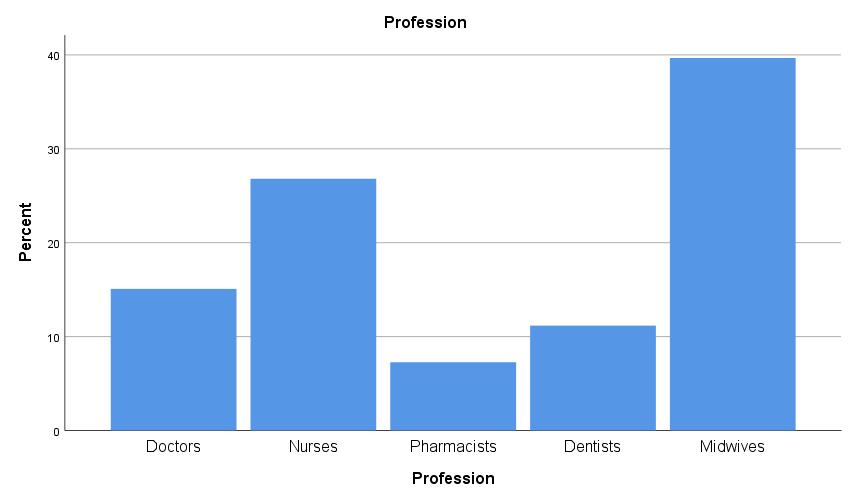
Table 1: Demographic Characteristics of Study Participants
Characteristics Category Frequency (n) Percentage (%)
Gender Male 18 10.1 Female 161 89.9
Age 21-25 years 10 5.6 26-30 years 41 22.9 31-35 years 44 24.6 36-40 years 24 13.4 41-45 years 21 11.7 46-50 years 17 9.5 51 years & above 22 12.3
Public Health Centres
Puskesmas I Denpasar Utara 23 12.8 Puskesmas II Denpasar Utara 18 10.1 Puskesmas III Denpasar Utara 20 11.2
Puskesmas I Denpasar Timur 23 12.8 Puskesmas II Denpasar Timur 28 15.6
Puskesmas I Denpasar Selatan 8 4.5 Puskesmas II Denpasar Selatan 17 9.5 Puskesmas III Denpasar Selatan 16 8.9
Puskesmas IV Denpasar Selatan 12 6.7 Puskesmas Denpasar Barat I 8 4.5 Puskesmas II Denpasar Barat 6 3.4
Education
Undergraduate Academic Degree 171 95.5 Master’s Degree 5 2.8 PhD Degree 1 0.6 Specialist 2 1.1
International Journal of Healthcare Sciences ISSN 2348-5728 (Online)
Vol. 8, Issue 2, pp: (210-221), Month: October 2020 - March 2021, Available at: www.researchpublish.com
Working Experience < 1 year 3 1.7 1-5 years 67 37.4 6-10 years 47 26.3 11-15 years 29 16.2 16-20 years 8 4.5 21-25 years 10 5.6 26-30 years 11 6.1 ≥ 31 years 4 2.2
Knowledge of study participants
A total of 14 questions were used to measure knowledge on drug allergy among HCPs from 11 Public Health Centres, Denpasar, Bali. The range of knowledge scores was from 0 to 14 but the actual scores from the survey ranged from 6 to 11 with a mean of 8.2 (SD=2.7). The overall correct answer rate of the knowledge questionnaire was 58.6% (8.2/14*100) while the range of correct answer rates for all participants were between 52.1% to 62.1% (Table 3). Rate of participant’s level of knowledge regarding drug allergy with scores is illustrated in Table 2.
Table 2: Rate of Knowledge Level
Knowledge Level Scores Rate (%)
Good ≥ 11 ≥ 78.6%
Moderate 7 – 10 50.0% - 71.4% Poor ≤ 6 ≤ 42.9%
Table 3 shows the distribution of mean and standard deviation knowledge score of drug allergy among HCPs by profession. Knowledge scores of HCPs were not significantly differed by profession (p ˃ 0.05).
Table 3: Knowledge Scores of HCPs by Professional Group
Profession Frequency Percentage (%)
Knowledge Score (Mean ± Standard Deviation) P -Value
Doctors 27 15.0 8.5 ± 1.9 0.115 Nurses 48 26.8 8.0 ± 2.9 Pharmacists 13 7.3 8.6 ± 3.0 Dentists 20 11.2 8.7 ± 2.8 Midwives 71 39.7 7.3 ± 2.9 Total 179 100.0 8.2 ± 2.7
Table 4 shows most HCPs 70.4% (126/179) had moderate knowledge regarding drug allergy. Majority were 77.8% (21/27) of doctors had moderate level of knowledge. Only 19.6% (35/179) of HCPs had good knowledge of drug allergy. More dentists 30.0% (6/20) and pharmacists 23.1% (3/13) had good knowledge (Annex 5).
Table 4: Frequency and Percentage Distribution of Knowledge regarding Drug Allergy among HCPs in Different Professional Group
Profession Knowledge Level n (%)
Good Moderate Poor
Doctors 5 (18.5) 21 (77.8) 1 (3.7) Nurses 10 (20.8) 34 (70.8) 4 (8.3) Pharmacists 3 (23.1) 9 (69.2) 1 (7.7) Dentists 6 (30.0) 13 (65.0) 1 (5.0) Midwives 11 (15.5) 49 (69.0) 11 (15.5)
Total 35 (19.6) 126 (70.4) 18 (10.0)
International Journal of Healthcare Sciences ISSN 2348-5728 (Online)
Vol. 8, Issue 2, pp: (210-221), Month: October 2020 - March 2021, Available at: www.researchpublish.com
Figure 2: Bar Chart showing Distribution Knowledge of Mechanism of Drug Allergy among HCPs
Figure 2 shows the knowledge regarding mechanism of drug allergy had a mean score of 2.9 ± (SD=1.3), the scores ranged from 2 to 4. Most 67.0% (120/179) of HCPs had poor level of knowledge regarding the mechanism of drug allergy. Majority of midwives 80.3% (57/71) had poor knowledge about the mechanism of drug hypersensitivity reactions; followed by doctors with 66.7% (18/27).
Figure 3: Bar Chart showing Distribution Knowledge of Clinical Manifestations of Drug Allergy among HCPs
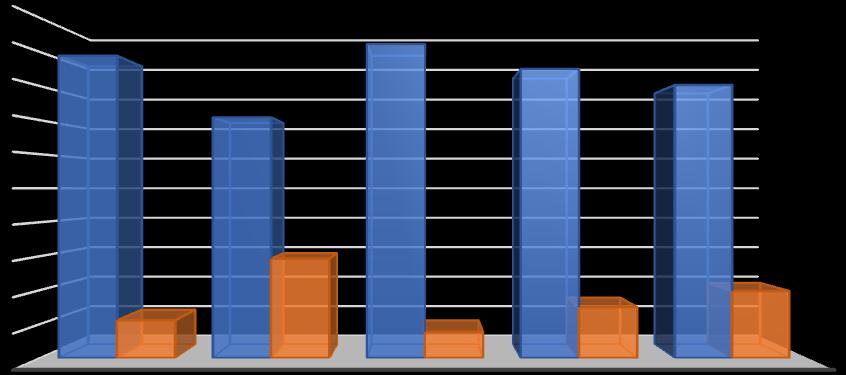
Figure 3 shows the knowledge regarding clinical manifestation of drug allergy had a mean score of 0.8 ± (SD=0.4), the scores ranged from 0 to 1. Most 80.4% (144/179) of HCPs had overall good level of knowledge regarding the clinical manifestation of drug allergy. 92.8% (12/13) of pharmacists, 88.9% (24/27) of doctors, 85.0% (17/20) of dentists, and 80.3% (57/71) of midwives had good level of knowledge about clinical manifestation of drug allergy.
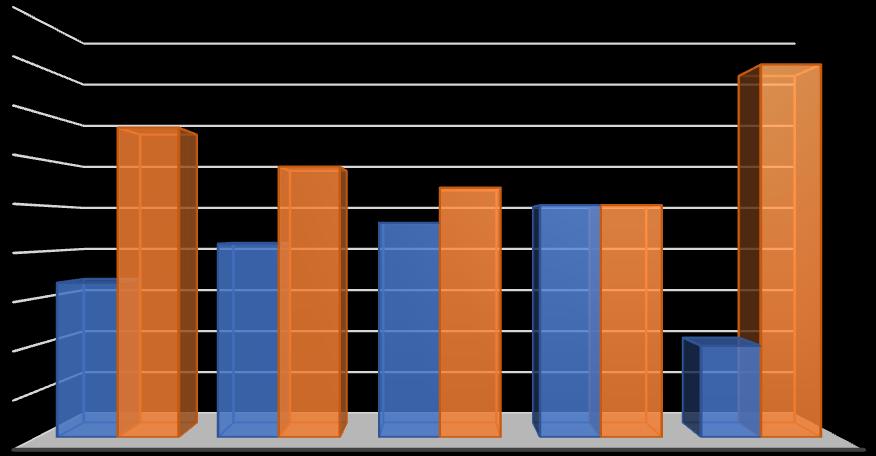
Vol. 8, Issue 2, pp: (210-221), Month: October 2020 - March 2021, Available at: www.researchpublish.com
0.00% 10.00% 20.00% 30.00% 40.00% 50.00% 60.00% 70.00% 80.00%
22.20% 29.20% 38.50% 40.00% 23.90% 77.80% 70.80% 61.50% 60.00% 76.10% %
Figure 4: Bar Chart showing Distribution Knowledge of Diagnosis of Drug Allergy among HCPs
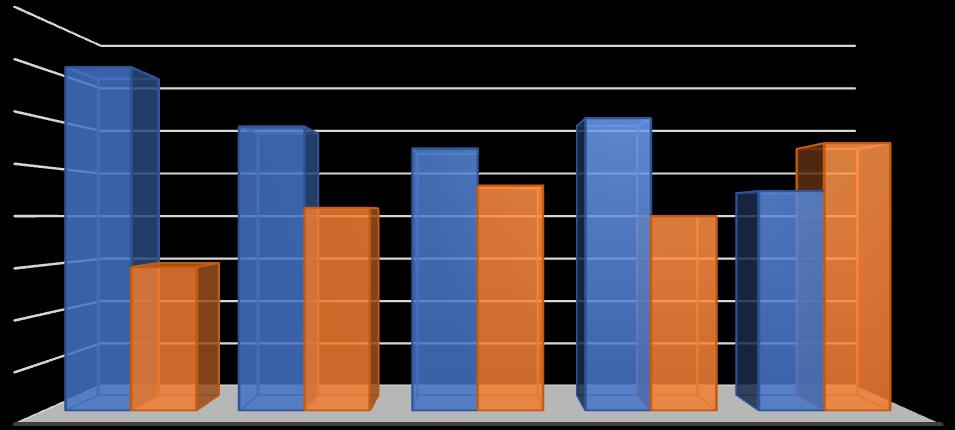
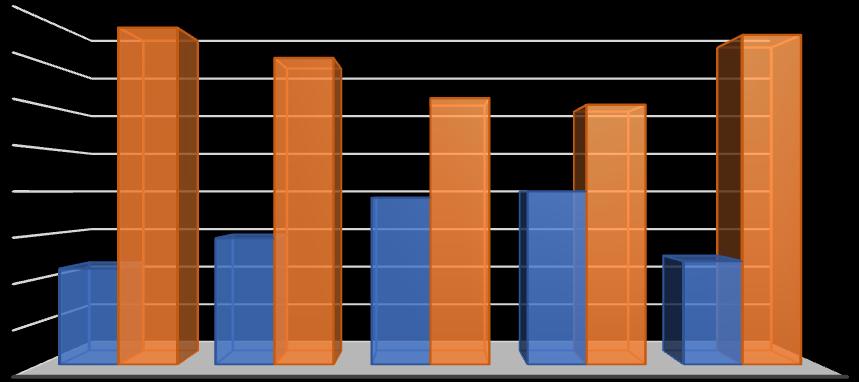
Figure 4 summaries the knowledge regarding diagnosis of drug allergy had a mean score of 2.8 ± (SD=1.5), the scores ranged from 1 to 4. Most of 72.1% (129/179) of HCPs had poor level of knowledge regarding the diagnosis of drug allergy. Majority are 77.8% (21/27) of doctors and 76.1% of midwives had poor level of knowledge towards the diagnostic tests of drug allergy.
Figure 5: Bar Chart showing Distribution Knowledge of Management of Drug Allergy among HCPs
Figure 5 shows the knowledge regarding management of drug had a mean score of 1.4 ± (SD=0.7), the scores ranged from 1 to 2. Most 54.7% of HCPs had good level of knowledge towards the management and medication of drug allergy. Majority were doctors with 70.4% (19/27).
Attitude of study participants
International Journal of Healthcare Sciences ISSN 2348-5728 (Online)
Vol. 8, Issue 2, pp: (210-221), Month: October 2020 - March 2021, Available at: www.researchpublish.com
Most of 53.1% (95/179) of HCPs were strongly agreed that in vivo, or in vitro test of drug was especially important before the administration of drug (Table 5). Based on Figure 8, 60.0% (12/20) of dentists and 58.3% (28/48) of nurses were strongly agreed the statement.
Most 36.3% (65/179) of HCPs were not sure to satisfy with the knowledge of drug allergy (Table 5). Figure 9 shows majority were pharmacists with 61.5% (8/13).
Most of 50.8% (91/179) of HCPs were strongly agreed that drug allergy had an adverse impact on patient’s quality of life (Table 5). Figure 10 shows majority of 76.9% (10/13) pharmacists and 60.0% (12/20) dentists were strongly agreed with the statement.
Most of 24.6% (44/179) of HCPs undetermined with the statement that drug allergy always occurred in their daily practice (Table 5). Figure 11 shows majority were 33.3% (9/27) of doctors who not known with the statement. 20.1% (36/179) of HCPs were agreed that drug allergy always occurred in their daily practice. Majority of 38.5% (5/13) pharmacists agreed that statement.
Table 5: Distribution of Attitudes of HCPs towards Drug Allergy
Attitudes
Questions
n (%) Strongly Disagree Disagree Uncertain Agree Strongly
Agree
C1. Do you think HCPs should receive advanced knowledge of DHRs? 0 (0.0) 1 (6.0) 2 (1.1) 32 (17.9) 144 (80.4)
C2. Do you think HCPs should receive advanced training of DHRs? 2 (1.1) 2 (1.1) 12 (6.7) 32 (17.9) 131 (73.2)
C3. Do you think in vivo, or in vitro test of drug is especially important before drug administration? 1 (0.6) 3 (1.7) 39 (21.8) 41 (22.9) 95 (53.1)
C4. Do you satisfy with your knowledge of DHRs? 13 (7.3) 26 (14.5) 65 (36.3) 37 (20.7) 38 (21.2)
C5. Do you think drug allergy has an adverse impact on patient’s quality of life? 2 (1.1) 9 (5.0) 23 (12.8) 54 (30.2) 91 (50.8)
C6. Do you think drug allergy always occurred in your daily practice? 31 (17.3) 34 (19.0) 44 (24.6) 36 (20.1) 34 (19.0)
Figure 11: Bar Chart showing Distribution of Attitudes regarding Drug Allergy in Daily Practice among HCPs 4.
DISCUSSION
In Indonesia, especially in Bali, there has not been a published data of knowledge and attitudes regarding drug allergy among healthcare practitioners. Hence, this study investigated the level of knowledge and attitudes of HCPs towards drug allergy from 11 Public Health Centres in Denpasar, Bali. The discussion of the findings on this survey presented (i) response rate, (ii) knowledge, and (iii) attitudes of HCPs regarding drug allergy in Public Health Centres, Denpasar, Bali. Response
Rate
There was an overall response rate of 67.8%. The response rate was acceptable since a response rate of 74.0% using a questionnaire was extremely good 4 A lower response rate from dentists (51.3%) reduced the overall response rate since doctors, nurses, pharmacists, and midwives had a response rate of 62.8%, 64.9%, 68.4% and 79.8%, respectively. A possible explanation for the lower response rate from dentists in this study may be that most dentists were over-worked and found it difficult to find time to complete the questionnaire.
Knowledge regarding Drug Allergy among HCPs
Drug allergy is the allergic reaction of immune system to a medication. Drug allergy is the type of unpredictable reaction, which is immunological response to patients.3 The majority of 70.4% HCPs from 11 Public Health Centres had moderate knowledge about the drug allergy with only 19.6% having good knowledge. More dentists (30.0%) and pharmacists (23.1%) had good knowledge scores which were not statistically differed by professional group. A similar study done in China on 259 HCPs reported that doctors had higher level of knowledge than nurses and medical students 4 This stands in contrast with a study in Turkey by Gökmirza Özdemir (2020) found that residents had higher knowledge scores of drug allergy than interns in Turkey.5 This study did not support that doctors had moderate level of knowledge because due to low response rate of doctors in this study compared with other studies.
Knowledge about the mechanism of drug allergy
67.1% of HCPs had poor level of knowledge about the mechanisms of drug allergy. In this study, majority 72.1% of HCPs answered correctly that drug induced anaphylaxis belongs to type I hypersensitivity and effector cell was mast cells (45.8%). Anaphylaxis was the type I immune reaction which was severe, life threatening allergic reaction occur minutes to hours after drug exposure due to the release of inflammatory mediators and cytokinesis from mast cells or basophils.2 Type II was the cytotoxic reaction, while type III was the immune complex reaction and type IV was the delayed
International Journal of Healthcare Sciences ISSN 2348-5728 (Online)
Vol. 8, Issue 2, pp: (210-221), Month: October 2020 - March 2021, Available at: www.researchpublish.com
hypersensitivity reactions.1 69.3% of HCPs in this study knew that type I drug hypersensitivity reactions mediated by IgE antibody, which is very less when compared to same study conducted in China where 83.4% of HCPs had this knowledge.4 Only 16.2% of HCPs answered correctly that drug dosage was not the factor of drug allergy which is lower than in a study from Central China where 47.1% of HCPs had this knowledge.4 But,2 stated that prolonged high doses or frequent doses were more likely to lead hypersensitivity reactions than a large single dose. Heredity or family history was also risk factors of drug allergy.
Majority of HCPs answered incorrectly that administration route was not the factor of drug allergy. In route of administration, such as topical, intramuscular, and intravenous were more likely to cause allergic drug reactions than oral administration, especially on inflamed skin because it has been associated with catastrophic anaphylactic reactions.3 This finding from this study supported another study finding that HCPs in this study had HCPs had lack of knowledge about the mechanism of drug allergy, especially in risk factors of drug allergy which would in future fail to understand the allergies in patients’ body by HCPs.
Knowledge about the clinical manifestations
of drug allergy
80.4% of HCPs in this study had good knowledge regarding the clinical manifestation of drug allergy is cutaneous symptoms, in contrast with 74.5% of HCPs in China study.4 A study from Turkish reported 85.1% (535/630) of HCPs had good knowledge that skin rash is the common clinical manifestation of drug allergy.5 The cutaneous reactions were most common clinical manifestations to determine further diagnostic tests and management. Anaphylaxis was the most easily avoidable causes because anaphylaxis was a multi organ reactions such as hypotension, bronchospasm, gastrointestinal symptoms and etc.1,6 This study findings supported another study finding that most of HCPs had excellent knowledge of drug allergy. Knowledge regarding sign and symptom of DHRs is important to prevent severe reactions of drug allergy.
Knowledge about diagnosis of drug allergy
Most of HCPs (72.1%) in this study had poor knowledge about the diagnosis of DHRs. This is consistent with a Turkish study, where 14.5% of HCPs had less knowledge towards the confirmation test of anaphylaxis.5 Only 30.2% of HCPs in this study stated that provocation tests as the gold standard to diagnosis of drug allergy, which is lower than same study conducted in China 39.8%.4 This might be due to that DPT was potentially harmful and should performed by experienced personnel in facilities.6 The DPT is used to diagnose the immediate hypersensitivity reactions. DPT cannot be identified with adequate reliability based in history, skin testing and in vitro investigations.2
In this study, 37.4% stated incorrectly the appropriate time to perform skin test when drug allergy is suspected, in contrast with 41.0% of HCPs in China. This might be due to the recommendation of skin tests in daily practice to predict drug allergy in China.4 Skin prick tests was the first screening step when immediate DHRs were suspected and it should be performed at least a months after systemic allergic reactions because the test reactively may be falsely negative for weeks after such reaction. Positive skin tests were sign for the presence of antigen specific IgE and help in the diagnosis of a type I hypersensitivity reaction.7 There is obviously a need to improve the knowledge of HCPs regarding DHRs diagnostic tests.
Knowledge about management of drug allergy
54.7% of HCP in this study had good level of knowledge regarding management of drug allergy. In this study, 80% of HCPs in this study reported that epinephrine is the first choice for the treatment of anaphylaxis which is same as similar study conducted in China.4 In Turkish study, 85.0% of HCPs knew that epinephrine is the first choice of treatment. Antihistamine was effective in relieving allergic reaction caused by the release of histamine. Antihistamine had no role in the acute management of anaphylaxis. This finding supports previous study findings that majority of HCPs had good knowledge about the treatment of DHRs. Advanced knowledge and training are needed to know more about the medication and treatment of the severe, life – threatening allergic reactions by drugs.
Attitude of HCPs towards Drug Allergy
Majority 36.3% of HCPs were not satisfying with knowledge of drug allergy and almost all HCPs were strongly agreed to received advanced knowledge and training of DHRs, 80.4% and 73.2%, respectively. The majority were dentists and pharmacists. This might be due to only few HCPs from dentists (30.1%) and pharmacists (23.1%) had good level of knowledge.
International Journal of Healthcare Sciences ISSN 2348-5728 (Online)
Vol. 8, Issue 2, pp: (210-221), Month: October 2020 - March 2021, Available at: www.researchpublish.com
Majority of HCPs in this study were strongly agreed that in vivo, or in vitro test of drug is especially important before drug administration. Majority were 60.0% of dentists. This might be due to the 40.0% of dentists in this study had good level of knowledge regarding current diagnostic tests.
In this study, majority 51.0% of HCPs strongly agreed to the statement that drug allergy has an adverse impact on patients’ quality of life. Majority were 76.9% of pharmacists and 60.0% of dentists because 39.0% of pharmacists and 35.0% of dentists agreed that drug allergy always occurred in daily practice.
5. CONCLUSION
In conclusion, larger proportion of HCPs from Public Health Centres in Denpasar, Bali demonstrated a moderate level of knowledge regarding drug allergy. Majority HCPs had good knowledge of clinical manifestation and management of drug allergy. While most of HCPs had poor knowledge towards the mechanism and diagnosis of drug allergy. Furthermore, majority HCPs were strongly agreed to the attitudes of drug allergy statements. There was no significant difference between knowledge and attitudes of HCPs.
6. RECOMMENDATION
More education and training were needed by HCPs on the mechanism and diagnosis of drug allergy to understand the process of allergy occur in our body and improve the effectiveness of treatments of drug allergy for the patients. Future studies involving a larger sample size may lead to sharing of information and collaborative care of drug allergy among HCPs in Bali.
REFERENCES
[1] Hamm RL. Drug allergy: delayed cutaneous hypersensitivity reactions to drugs. EMJ Allergy Immunol.. 2016;1(1):92-101.
[2] Warrington R, Silviu-Dan F, Wong T. Drug allergy. Allergy, Asthma & Clinical Immunology. 2018 Sep 1;14(2):60.
[3] World Allergy Organization. 2014. A report about drug allergies. Retrieved from https://www.worldallergy.org/ education-and-programs/education/allergic-disease-resource-center/professionals/drug-allergies.[accessed14th November 2014].
[4] Wang Y, Zhu R, Huang N, Li W, Yang L, Zhang S, Liu G. Knowledge, attitudes, and practices survey of drug allergy among healthcare practitioners in central China: a multicenter study. Asia Pacific Allergy. 2016 Apr 1;6(2):105-11.
[5] Özdemir PG, Kızılca Ö, Aylanç H, Çelik V, Beken B, Akbulut SD, Yazıcıoğlu M, Süt N. Residents and interns in the 3 university hospitals: their knowledge of and attitudes to drug allergy. Asia Pacific Allergy. 2020 Jul;10(3).
[6] American Academy of Allergy A, American College of Allergy A, Joint Council of Allergy A, Joint Task Force on Practice Parameters. Drug allergy: an updated practice parameter. Annals of allergy, asthma & immunology: official publication of the American College of Allergy, Asthma, & Immunology. 2010 Oct;105(4):259.
[7] Demoly P, Adkinson NF, Brockow K, Castells M, Chiriac AM, Greenberger PA, Khan DA, Lang DM, Park HS, Pichler W, Sanchez‐Borges M. International Con sensus on drug allergy. Allergy. 2014 Apr;69(4):420-37.
